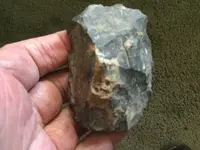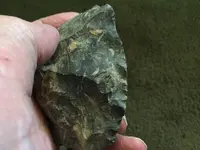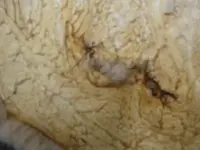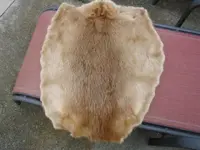uniface
Silver Member
- Joined
- Jun 4, 2009
- Messages
- 3,216
- Reaction score
- 2,905
- Golden Thread
- 0
- Location
- Central Pennsylvania
- Primary Interest:
- Other
The only factor that identifies this as being from the Paleoindian era is the fact that it was found on a single-component fluted point site in Coshocton County, Ohio that was a reduction site as well as a habitation site. ex Alan Harbuck.
Three substantial flakes were removed from it, as you can see. As is usually the case with flake cores, the thin edge was suited to cutting tasks and was so used, with some re-edging as use progressed.


Three substantial flakes were removed from it, as you can see. As is usually the case with flake cores, the thin edge was suited to cutting tasks and was so used, with some re-edging as use progressed.


Amazon Forum Fav 👍
Upvote
0







